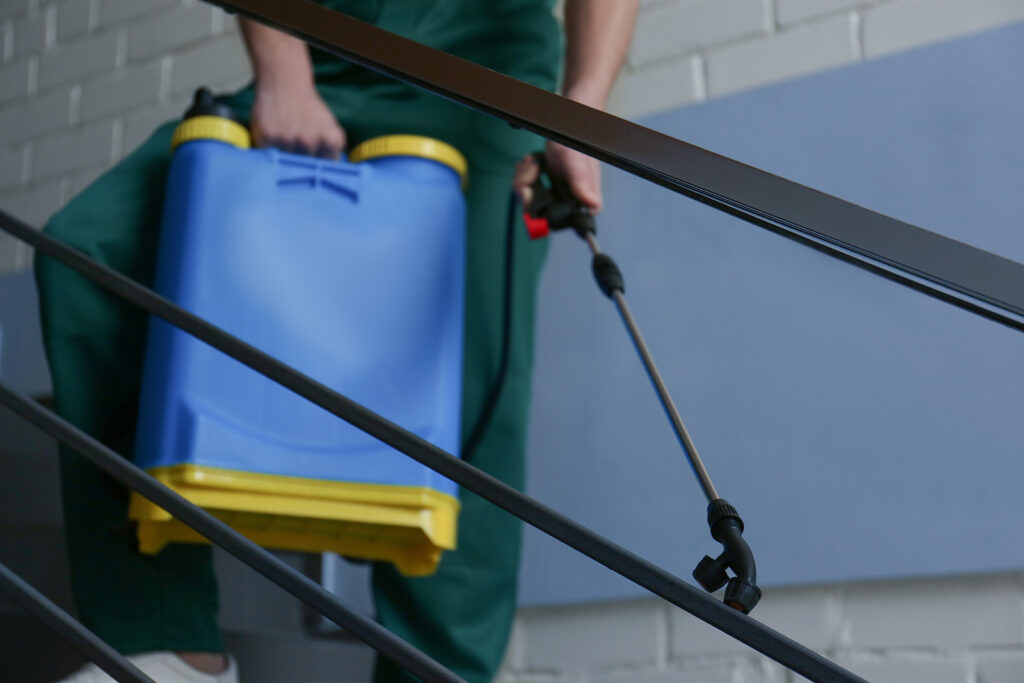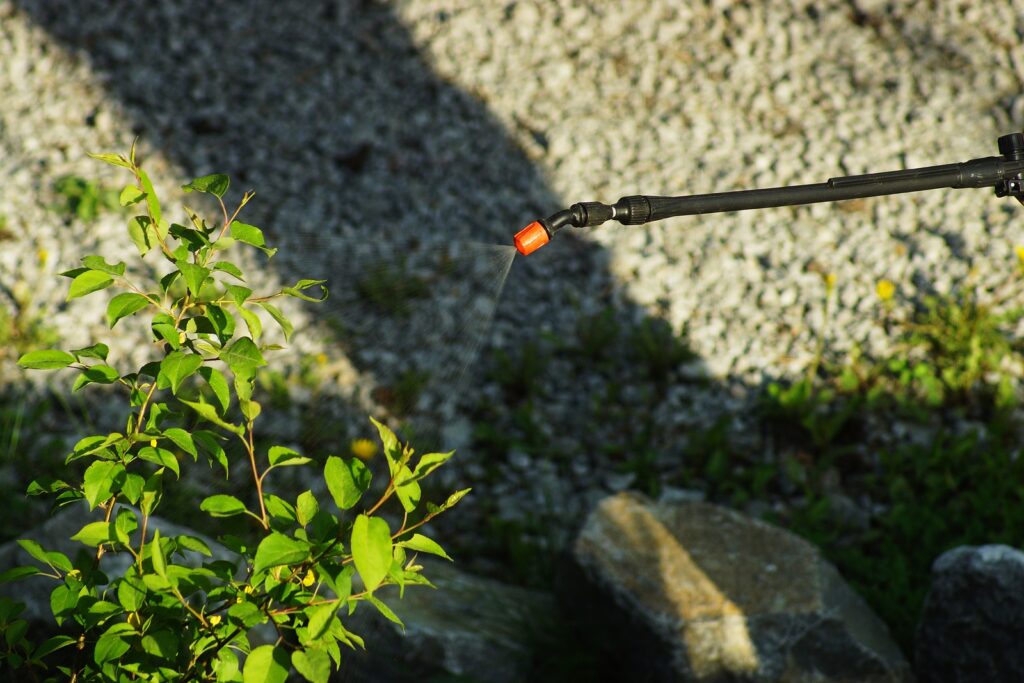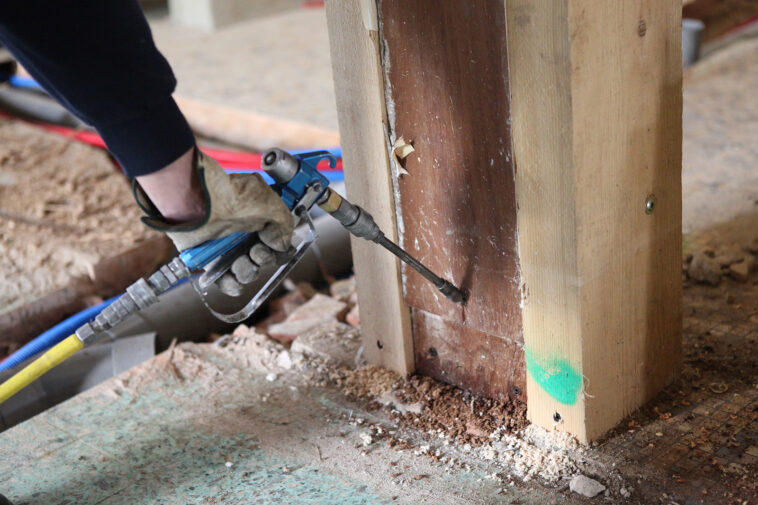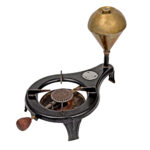Dealing with termites can be a homeowner's nightmare. These silent destroyers have the potential to wreak havoc on your property if left unattended. As someone who takes pride in their home, I know firsthand how crucial it is to address a termite infestation promptly. When faced with these relentless pests, one of the toughest decisions I had to make was whether to handle the issue myself with a do-it-yourself (DIY) termite treatment or seek the assistance of a professional pest control company.
In this comprehensive guide, I want to share my journey into the world of termite treatment, highlighting the effectiveness, advantages, and disadvantages of both the DIY and professional approaches. By the end of this article, I hope you'll feel better equipped, just as I did, to make an informed decision on how to tackle these destructive pests and protect your cherished home.
Understanding the Termite Threat
Before delving into the treatment options, it's crucial to understand the nature of the termite threat.
Types of Termites
Termites are social insects that come in various types, and each type has unique characteristics that can affect the approach to treatment. The three main types of termites that pose a threat to homes in the United States are subterranean termites, drywood termites, and dampwood termites.
- Subterranean Termites: These are the most common and destructive type of termites. Subterranean termites build their colonies underground and establish connections to their food sources through mud tubes. They enter homes from the ground, often through mud tubes, and feed on wood structures, causing significant damage.
- Drywood Termites: Unlike subterranean termites, drywood termites do not require soil contact. They infest dry, sound wood and can be more challenging to detect. Drywood termite infestations are often discovered when homeowners find discarded wings or small piles of fecal pellets.
- Dampwood Termites: Dampwood termites are attracted to wood with high moisture content, typically found in damp or decaying wood. They are less common and are usually found in wetter regions of the country. Dampwood termites are less likely to infest dry homes.
Signs of Termite Infestation
Certainly, let's delve deeper into each of these signs of a termite infestation and explore additional information to help you better understand the potential extent of the problem:
Mud Tubes
- Subterranean termites rely on these mud tubes not only for transportation but also for maintaining a controlled environment. The mud serves as a protective barrier, shielding them from predators and maintaining moisture levels necessary for their survival.
- These tubes can extend from the ground to your home's structural components, such as wooden beams or foundation walls. Their presence often indicates that termites have established a direct route to their primary food source – the wood in your property.
- It's essential to inspect both the interior and exterior of your home for mud tubes regularly. Termites can quickly repair damaged tubes, making them challenging to detect without a thorough examination.
Discarded Wings
- Termite swarms typically occur during the spring or early summer, when conditions are optimal for their flight. Observing a swarm of winged termites around your property can be an alarming sight. After swarming, these termites shed their wings as they settle into their new colonies.
- The presence of discarded wings is often a sign of an active termite colony nearby. You may notice these wings in windowsills, near doors, or in light fixtures. It's crucial to distinguish termite wings from those of flying ants, as they can appear similar at first glance.
- If you identify these wings indoors, it's a strong indication that termites have infiltrated your living space, warranting immediate attention.
Wood Damage
- Termites feed on cellulose, a component found in wood, paper, and other plant materials. When they infest wooden structures, they can cause significant structural damage over time.
- The damage inflicted by termites can vary in appearance. In advanced stages, it may include extensive tunneling within the wood, resulting in a weakened structure that can sound hollow when tapped.
- Additionally, termites often leave behind frass, which is a mix of termite feces and wood particles. This powdery substance can accumulate around the infested area and serve as another indicator of their presence.
Now that you have a better understanding of the termite threat, let's explore the two primary approaches to termite treatment: DIY termite treatment and professional termite treatment.

DIY Termite Treatment
Many homeowners opt for DIY termite treatment due to various advantages, but it's essential to be aware of the potential drawbacks as well.
Advantages of DIY Treatment
- Cost-Effective Savings: One of the most significant advantages of opting for do-it-yourself (DIY) termite treatment is the substantial cost savings it offers. Unlike hiring professional pest threats top control services, which often come with significant fees, DIY treatments can be considerably more budget-friendly upfront. This can be particularly appealing for homeowners who are cost-conscious or facing budget constraints. By undertaking the treatment yourself, you not only save money but also gain a sense of financial control in addressing termite problems.
- Immediate Action to Mitigate Damage: DIY termite treatments empower homeowners to take immediate action upon discovering a termite infestation. Termites are notorious for causing rapid and extensive damage to wooden structures, potentially jeopardizing the structural integrity of your home. With DIY treatments readily available, you can swiftly initiate treatment measures, preventing further harm to your property. This rapid response can be critical in safeguarding your investment and avoiding costly repairs down the line.
- Convenience and Flexible Scheduling: DIY termite treatments offer the convenience of addressing termite issues on your own schedule. Unlike professional services that require you to coordinate appointments and wait for their availability, DIY treatments give you the freedom to choose the timing that suits you best. This flexibility is especially beneficial for homeowners with busy lifestyles or those who prefer to tackle home maintenance tasks at their own pace. Moreover, it allows you to respond promptly to termite infestations without delay, reducing the potential for extensive damage.
- Educational Opportunity: Undertaking a DIY termite treatment can also provide valuable educational opportunities. You can learn about termite behavior, infestation signs, and the various treatment methods available. This knowledge not only helps you address the current issue but also equips you with information to prevent future termite problems. By becoming more informed about termite control, you gain greater confidence in managing potential pest issues in the long term.
- Customization for Specific Needs: DIY treatments allow homeowners to tailor their approach to the specific needs of their property. You can choose the products and methods that align with your preferences and the severity of the infestation. This customization enables you to address termite problems with a personalized strategy, potentially leading to more effective results.
- Environmental Considerations: For those concerned about the environment, DIY termite treatments also offer the opportunity to select eco-friendly or less toxic options. This allows you to minimize the environmental impact of termite control while still effectively managing the infestation threats top pest.
Disadvantages of DIY Treatment
While DIY termite treatment has its advantages, there are also several disadvantages to consider.
- Limited Expertise: Effective termite control requires a deep understanding of termite behavior, biology, and the appropriate treatment methods. DIY enthusiasts may lack the necessary expertise to address complex infestations or identify critical treatment areas.
- Risk of Ineffectiveness: DIY treatments, if not executed correctly, may not effectively eliminate the entire termite colony. Termites can be challenging to locate and eradicate fully, and mistakes in treatment can lead to continued infestations.
- Safety Concerns: Handling pesticides and chemicals can pose health risks to homeowners and their families. Without proper knowledge and precautions, there is a risk of exposure to potentially harmful substances pest control termite.
Common DIY Treatment Methods
Homeowners have a range of DIY termite treatment methods at their disposal, each offering specific applications and effectiveness levels. These methods empower homeowners to take control of termite infestations and protect their property. Here are some common DIY termite treatment methods, along with additional information:
- Liquid Termiticides: Liquid termiticides are a popular choice for DIY termite control. These chemicals are applied to the soil around the foundation of your home, creating a protective barrier that deters termites from entering. They can be highly effective in preventing termite infestations and are often used as a preventive measure. Notable products in this category include Taurus SC and Termidor SC. It's important to note that proper application and adherence to safety guidelines are crucial for the effectiveness of liquid termiticides.
- Bait Stations: Bait stations offer another effective DIY termite treatment method. These stations use termite bait placed either in the ground or on wooden stakes strategically placed around your property. Termites are attracted to the bait, consume it, and then carry it back to their colony, ultimately leading to the colony's elimination. Brands like Spectracide and Advance Termite Bait System offer readily available DIY options for homeowners. Bait stations are particularly useful for targeting termite colonies that are already established on your property.
- Borate Wood Treatments: Borate-based products, such as Bora-Care, are applied directly to wood surfaces. These treatments are effective in deterring termites from feeding on wood, making them an excellent choice for preventing infestations in vulnerable areas, such as wooden structures, furniture, or framing. Borate wood treatments are typically long-lasting and provide ongoing protection against termite damage. They can be particularly beneficial for safeguarding wooden components of your home.
- Foam Termiticides: Foam termiticides, like Termidor Foam, are specifically designed for localized termite treatments. Homeowners can apply the foam directly into termite galleries or infested areas within walls or wooden structures. The foam expands to reach concealed termite colonies, effectively exterminating them. This method is useful for precise treatment in hard-to-reach or hidden spaces.
- Heat and Cold Treatments: Extreme temperatures can also be employed as DIY termite control methods. High heat or extreme cold can be used to treat infested wooden items or localized termite colonies. While these methods can be effective, they may require specialized equipment and caution when handling extreme temperatures.
- Natural Remedies and Prevention: In addition to chemical treatments, many homeowners explore natural remedies and prevention measures. This may include using nematodes (beneficial microscopic worms) to control termites, maintaining proper moisture levels in and around your home, and regular inspections to catch termite activity early.
While these DIY methods can be effective for smaller infestations or preventive measures, it's essential to approach them with caution and ensure that you follow the manufacturer's instructions carefully homeshield pest control.

Professional Termite Treatment
Professional termite treatment comes with its own set of advantages and disadvantages.
Advantages of Professional Treatment
- Expertise and Specialized Training: Opting for professional termite treatment brings the advantage of tapping into the expertise of pest control professionals. These experts possess extensive knowledge and experience in termite behavior and control methods. They undergo specialized training to understand the intricacies of termite infestations, enabling them to accurately assess the situation and determine the most effective course of action. Their in-depth understanding of termite biology and habits allows them to make informed decisions, which can be crucial in achieving successful termite eradication.
- Access to Advanced Technology and Treatments: Pest control professionals have access to cutting-edge technology and treatments that surpass many DIY options in terms of effectiveness. They utilize specialized equipment and chemical formulations that are designed for precision and efficiency in termite control. These advanced tools enable them to identify critical areas of infestation, such as hidden colonies or structural vulnerabilities, and tailor treatments accordingly. This approach increases the likelihood of complete termite elimination and minimizes the risk of recurring infestations.
- Customized Solutions: Professional pest control companies offer tailored solutions based on the specific needs of your property. They conduct thorough inspections to determine the extent of the infestation and the type of termites involved. This information allows them to design a targeted treatment plan that addresses your unique situation, ensuring a more efficient and comprehensive approach to termite control.
- Guarantees and Warranties: Many reputable pest control companies stand by the quality of their services and offer warranties and guarantees. These assurances provide homeowners with peace of mind, knowing that they can rely on the expertise of professionals and have recourse in case of continued termite activity. In the event that termites persist after treatment, the pest control company typically returns to reevaluate and, if necessary, provide additional treatments at no extra cost. This commitment to ensuring termite eradication is a valuable benefit that professional services bring to the table.
- Preventive Measures: Beyond addressing existing termite infestations, pest control professionals can also recommend and implement preventive measures to protect your property from future termite attacks. These preventive strategies may include barrier treatments, ongoing monitoring, and structural modifications designed to deter termite activity. By proactively safeguarding your home, you reduce the risk of future termite damage and the associated repair costs.
- Compliance with Regulations: Pest control professionals are well-versed in local regulations and safety guidelines related to termite treatments. They ensure that their methods and products meet these standards, providing a safe and legally compliant approach to termite control price is based on location.
Disadvantages of Professional Treatment
Despite the advantages, professional termite treatment also has some drawbacks that homeowners should consider.
- Cost: Professional termite treatment can be more expensive than DIY methods, especially for extensive infestations. The cost varies depending on factors such as the size of your home, the severity of the infestation, and the chosen treatment method.
- Scheduling: When opting for professional termite treatment, you may need to wait for an appointment with a pest control company. This delay can be frustrating, particularly when dealing with active termite infestations.
- Chemical Exposure: Some professional treatments involve the use of chemicals that may raise environmental and health concerns. Homeowners with sensitivities or environmental considerations should inquire about eco-friendly or non-chemical treatment options.
Common Professional Treatment Methods
Pest control professionals employ several effective termite treatment methods, each tailored to specific situations and infestation levels customized price is based.
- Liquid Soil Treatment: Liquid termiticides are applied to the soil around the foundation of your home. This treatment creates a chemical barrier that eliminates termites upon contact. Professional-grade liquid termiticides, such as Termidor and Premise, are typically used.
- Termite Bait Systems: Professionals install termite bait stations strategically around your property. The bait is consumed by termites and carried back to the colony, gradually eradicating it. The Sentricon system is a well-known example of a termite bait system used by professionals.
- Fumigation: Fumigation is a comprehensive termite treatment method typically reserved for severe infestations. It involves enclosing your home and introducing a fumigant gas that penetrates all areas, effectively eliminating termites. Fumigation should only be performed by licensed professionals.
The effectiveness of professional termite treatment largely depends on the expertise of the pest control company, the chosen treatment method, and the severity of the infestation.
DIY vs. Professional: Effectiveness Comparison
To make an informed decision about termite treatment, it's essential to understand the comparative effectiveness of DIY and professional approaches.
Effectiveness of DIY Termite Treatment
The effectiveness of DIY termite treatment methods can vary significantly based on several factors:
- Infestation Severity: DIY treatments are often more successful for minor infestations or preventive measures. If you catch the problem early, you may be able to address it effectively on your own.
- Application Accuracy: The accuracy of the application is crucial for DIY treatments. Mistakes in the application process, such as improper placement of bait stations or insufficient coverage with termiticides, can lead to ineffectiveness.
- Choice of Products: The choice of DIY products also plays a role in effectiveness. Some products may be more suitable for specific termite types or infestation levels. Thorough research and product selection are essential.
- Monitoring: DIY treatments require ongoing monitoring to assess their effectiveness. Regular inspections and maintenance are necessary to ensure that termites are being eliminated and that new infestations are prevented.
While DIY treatments can be successful for smaller infestations and preventive measures, they may fall short when dealing with extensive or hidden termite colonies. If you choose the DIY route, it's essential to educate yourself thoroughly and be prepared to invest time and effort into treatment and monitoring.
Effectiveness of Professional Termite Treatment
Professional termite treatment, when conducted by experienced pest control experts, is often more effective in eradicating termites, particularly in cases of severe infestations. Here are factors that contribute to the effectiveness of professional treatment:
- Expertise: Pest control professionals have specialized knowledge of termite biology, behavior, and treatment methods. They can accurately assess the extent of the infestation and tailor treatment accordingly.
- Access to Advanced Treatments: Pest control companies have access to professional-grade termiticides, bait systems, and equipment that are not available to consumers. These advanced treatments are often more effective at eliminating termite colonies.
- Comprehensive Inspection: Professionals conduct thorough inspections of your property to identify critical areas of termite activity. This allows them to target treatment where it matters most.
- Guarantees: Many pest control companies offer warranties and guarantees for their services. These guarantees provide assurance that, if termites persist after treatment, the pest control company will return to address the issue at no additional cost.
It's important to note that the effectiveness of professional treatment can vary depending on the expertise of the pest control company you choose. To ensure the best results, research and select a reputable and experienced pest control provider.

Factors Influencing Your Decision
First and foremost, the severity of the termite infestation in your home plays a pivotal role in dictating the most suitable approach to treatment. For minor infestations, which might involve the discovery of just a few termites or early signs of termite activity, DIY treatments can prove effective. In such cases, prompt action using DIY methods can potentially prevent further damage.
Conversely, when dealing with extensive infestations that have already inflicted substantial harm or those encompassing multiple colonies, professional treatment is typically the recommended course of action. Furthermore, hidden infestations that linger within walls or structural components pose a unique challenge, making it advisable to consult professionals for a thorough inspection if such suspicions arise.
Budget considerations also come into play when determining the right treatment approach. DIY termite treatment often presents a more budget-friendly option upfront due to the absence of professional service fees, making it appealing to homeowners on a tight budget. However, it's crucial to weigh the long-term value of each option.
While professional termite treatment may entail a higher initial cost, it can deliver long-term value by efficiently eradicating termites and averting future infestations. In this assessment, factor in potential repair costs and ongoing DIY treatments.
Time and expertise are vital components to consider. DIY treatments demand diligent research, preparation, and precise execution. Homeowners must be willing to invest their time and effort into treatment and ongoing monitoring.
DIY methods allow for immediate action upon discovering an infestation, which can prevent further harm while you plan for professional treatment if necessary. On the other hand, pest control professionals possess the expertise needed to accurately identify termite species, assess infestations, and apply treatments effectively. They streamline the process, saving you time in the long run.
Environmental and health concerns regarding chemical treatments merit attention as well. If you have such concerns, explore eco-friendly or non-chemical treatment options offered by pest control companies. These alternatives align with environmental sensibilities. Additionally, be cognizant of the potential risks associated with handling chemicals when using DIY treatments.
Always adhere to safety guidelines and precautions to minimize exposure. Pest control professionals can provide valuable insights into the environmental impact of their treatments and guidance on safe and responsible chemical usage, addressing your concerns comprehensively.
Final Thoughts
In my experience as a homeowner who has dealt with termite infestations, the decision between a do-it-yourself (DIY) approach and seeking professional pest control services is a crucial one. It's essential to consider factors such as the severity of the infestation, budget constraints, available time and expertise, and environmental and health concerns.
While DIY treatments offer cost savings, flexibility, and a chance to learn, they may have limitations and require careful application. Professional termite treatment, on the other hand, provides expert knowledge, access to advanced technology, and customized solutions but can come with a higher initial cost. No matter the choice, the priority is taking swift action to protect your home from termite damage and maintain a cherished haven for years to come.
Sources
https://www.ncbi.nlm.nih.gov/books/NBK217619/
https://www.epa.gov/safepestcontrol/termites-how-identify-and-control-them
https://19january2017snapshot.epa.gov/safepestcontrol/termites-how-identify-and-control-them_.html




